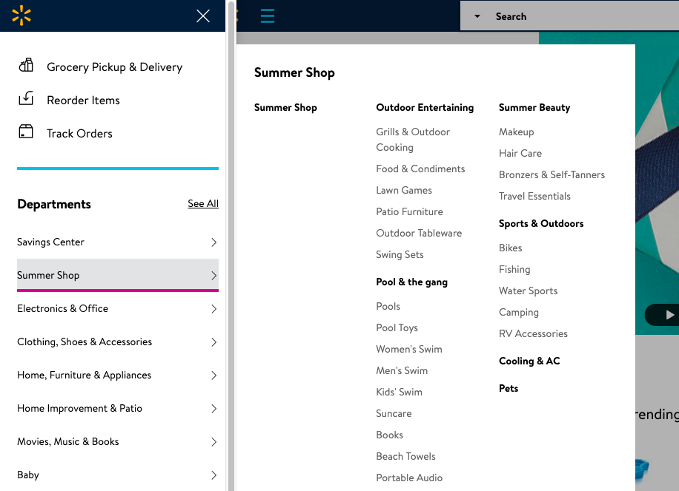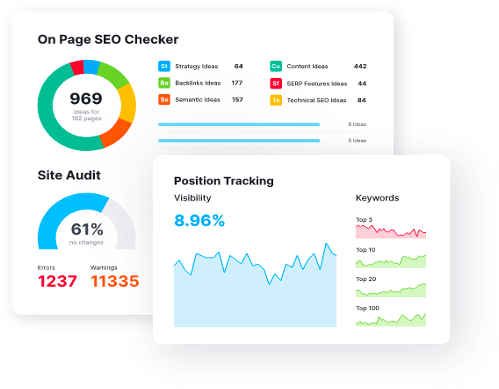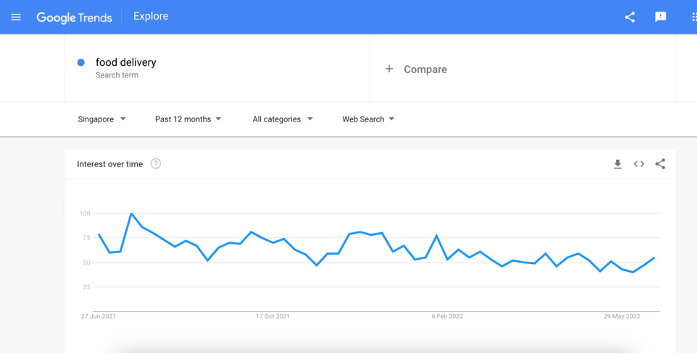
Guide to Website Marketing in Singapore
Singapore has one of the highest internet penetration rates in the region, and digital connectivity is regularly used locally. This presents an incredible opportunity for businesses looking to engage with an audience that is constantly online.
A website is a platform that reflects the brand, communicates with potential customers, and converts interest into action. It is a digital showcase of a company’s product and service and the organisation’s credibility to its visitors.
Website marketing is about crafting an online journey that is seamless, intuitive, and reflective of the target audience. This article aims to distil the essence of effective website marketing in Singapore. We will delve into the practicalities of building a website that resonates with a local audience, ranks well on search engines and supports objectives.
Understanding Singapore’s Digital Consumers
Singapore’s digital consumer base is as diverse as it is tech-savvy. Most locals are discerning and well-informed, often researching extensively online before making purchase decisions. The preference for mobile devices influences that websites should be designed with a mobile-first approach.
The typical consumer in this region also values convenience, with a strong preference for online shopping platforms that offer quick delivery and easy return policies. Payment preferences are leaning towards digital and contactless transactions. Additionally, there is a growing concern for data privacy and a preference for transparent communication from brands, particularly in how their data is used.
Consumers are also environmentally conscious, showing an increased interest in brands with sustainability credentials. This is influencing purchase decisions and pushing businesses to adopt more eco-friendly practices and to communicate these efforts effectively online. Video marketing and content are especially popular, necessitating the inclusion of multimedia in effective digital strategies.
Setting Up a Website
The foundation of an online presence begins with the domain name. Choose a domain name that is concise, memorable, and gives an immediate sense of your business or content. For local relevance, using a .sg or .com.sg top-level domain can be beneficial for targeting a Singaporean audience and may contribute positively to local search engine rankings. Ensure the domain name is easy to spell and avoids hyphens and numbers, reducing the risk of typos and confusion.
Web Hosting: A slow-loading website can increase bounce rates and reduce user satisfaction, negatively impacting SEO efforts. Opt for a reliable hosting provider that guarantees high uptime and offers servers near the target audience or uses a Content Delivery Network (CDN) to speed up load times.
Regularly test the site’s speed using tools such as Google’s PageSpeed Insights and make necessary adjustments. Elements that can slow down a website include large image files, unnecessary plugins, and bulky code. Streamline the site and optimize images for the web without compromising quality.

Use alt text for images, proper contrast ratios for text and backgrounds, and ensure that navigation can be completed with a keyboard. User interface elements should facilitate quick interactions, with clear calls to action and minimal barriers to completing a task, whether making a purchase, signing up for a newsletter, or reaching out for more information.
Search Engine Optimization (SEO) Strategies
Start by understanding the search behaviour of consumers in Singapore. Use search engine optimization (SEO) tools like Google Keyword Planner, Ahrefs, or SEMrush to identify the keywords and phrases that are most relevant and have a substantial search volume.
Consider both English and other languages prevalent in Singapore, such as Malay, Mandarin, and Tamil, for a broader reach. Long-tail keywords can be effective, whereas niche terms may have less competition and a higher conversion rate. Analyze the keywords used by local competitors and consider keywords related to local events, places, and slang that might be used in search queries.
On-page SEO

Title tags and meta descriptions should be concise and include primary keywords. They also need to entice users to click through to your website from the search results page. Header tags (H1, H2, etc.) should structure your content clearly and include relevant keywords. URLs should be clean and descriptive, ideally containing the main keyword for the page. Image alt-text is also an essential part of on-page SEO, providing search engines with context and improving accessibility.
Off-page SEO
Backlinks from reputable sites signal to search engines that the content is valuable and trustworthy. Focus on building relationships with local influencers, businesses, and media outlets that can provide high-quality backlinks. Content marketing, guest blogging, and participating in local digital communities can all contribute to a strong backlink profile.
Local listings play a crucial role in local SEO. List on local directories and platforms such as Google My Business, Yelp, and the Singapore Business Directory. These listings should be complete, accurate, and consistent across all platforms, as they can significantly affect local search rankings.
Additionally, garner reviews from local customers, as positive reviews can enhance visibility in search engine results. Monitor these listings regularly to ensure that all information remains up-to-date and to respond promptly to any reviews or customer inquiries.
Content Marketing
The content needs to be tailored, relevant, and engaging. Start by gaining a deep understanding of the audience’s preferences, cultural nuances, and the issues that matter to them. This knowledge will inform the tone, style, and subject matter of the content.
When writing content, it’s important to balance global appeal and local relevance. Use local language phrases and colloquialisms judiciously to establish rapport, but maintain clarity to ensure the content is accessible to locals and expatriates. Storytelling that includes local contexts, landmarks, or success stories can resonate well and drive engagement.
Stay updated on local events, holidays, and trends to make content timely and relevant. This can include cultural festivals, national holidays, or significant local news. Creating content that aligns with these occurrences can increase its appeal and shareability.
For instance, during events like the Singapore Food Festival or the Great Singapore Sale, crafting content that guides visitors and locals alike is a helpful resource. Similarly, tapping into trends such as sustainability or fintech can help content resonate more deeply with the audience.
Blogging, Infographics, and Video Content
Always prioritize quality and value in the content. Whether a blog post, an infographic, or a video, it should provide useful information or insights, solve a problem, or answer a question. This positions a website’s content to a credible and authoritative source in your industry.
Blogs that provide industry insights how-to guides, and feature local thought leadership can be effective. Infographics can distil complex data into visually appealing, easily digestible content. They are shareable and can help increase reach, especially when they contain actionable information that caters to the users’ interests.
Video content is rapidly gaining popularity in Singapore. Create short, captivating videos that can be easily consumed on mobile devices. Consider subtitled videos to increase accessibility and to cater to those who watch without sound. Live streaming of events and webinars can also generate high engagement, especially if they cover topics of local interest.
Pay-Per-Click (PPC) Advertising
PPC advertising is a digital marketing solution where advertisers pay a fee each time one of their ads is clicked. Google Ads remains the recommended PPC platform due to its vast reach and advanced targeting options—display ads in search results, on websites in the Google Display Network, and YouTube.
Social media ads are equally crucial, given Singapore’s high social media usage rates. Platforms like Facebook, Instagram, LinkedIn, and Twitter offer powerful targeting options based on demographics, interests, behaviours, and more. Each platform has strengths—Facebook and Instagram for broad audiences and visual products, LinkedIn for B2B and professional audiences, and Twitter for trending topics and direct engagement.
Creating Effective Ad Campaigns
PC campaigns must be culturally relevant and precisely targeted. Start by defining the audience segments—consider factors like age, language, interests, and search behaviours. Use localized keyword strategies that include local slang and nuances to ensure your ads are as relevant as possible.
Craft the ad copy to be clear, compelling, and action-oriented, with calls-to-action (CTAs) that resonate with the Singaporean market. Test different ad formats to see what works best for the audience—text-based search ads, visually appealing display ads, or engaging video ads. Visual elements should reflect the diversity of the population and urban landscape, and the language used should respect local linguistic preferences, like British English spelling.
Budgeting and ROI
Start with a clear understanding of the customer’s lifetime value (CLV) to determine the budget. Use bidding strategies that align with campaign goals—whether it’s maximizing clicks, impressions, or conversions.
Platforms like Google Ads provide automated bidding strategies that can help optimize spending based on different objectives. Track everything from the start. Implement conversion tracking to understand how well the PPC campaigns are performing to generate leads, sales, and other desired actions.
Regularly review key performance indicators (KPIs) such as click-through rate (CTR), cost per click (CPC), conversion rate, and return on ad spend (ROAS) to determine the effectiveness of your campaigns. Use A/B testing for ads, landing pages, and call-to-actions to refine the approach for better results continually. Make data-driven decisions to adjust campaigns and ensure to get the best possible ROI.
E-commerce Strategies
Singapore’s e-commerce landscape is dynamic and rapidly growing, with a tech-savvy population that readily embraces online shopping. Mobile commerce is particularly dominant, as most consumers use smartphones to shop online. There’s a preference for platforms that offer a seamless, omnichannel experience, allowing customers to shop through various devices and touchpoints.
Another key trend is personalization, where AI and data analytics tailor the shopping experience to individual customer preferences. This can significantly increase customer engagement and sales. Also, sustainability has become an important consumer consideration, with an increasing demand for eco-friendly products and business practices.
Social commerce, which combines e-commerce with social media, is gaining traction, with platforms like Facebook and Instagram offering integrated shopping features. Lastly, the convenience of subscription services and the availability of diverse payment options are trends reshaping consumer expectations in the e-commerce market.
Optimizing Website for E-commerce
An e-commerce website should provide an easy, efficient, and enjoyable shopping experience. High-quality product images and descriptions, a simple navigation structure, and a clear value proposition are essential. Website loading speed is critical; slow-loading pages can increase bounce rates and lost sales. Use website optimization techniques such as compressing images, minimizing code, and utilizing browser caching.
Invest in a robust search function on the site. Shoppers who use the search bar are more likely to convert, so having an intelligent search feature with auto-complete, suggestions, and error tolerance can significantly enhance the user experience. User-generated content, like customer reviews and ratings, can also be influential in the purchasing decision process. Encourage customers to leave feedback and make it easily accessible to shoppers.
Payment Gateway Integration and Security
Offer a variety of payment methods, including credit cards, mobile wallets like GrabPay or PayNow, and online payment systems such as PayPal to cater to different preferences. The payment gateway integration should be seamless and maintain the look and feel of your website to instil customer trust.
Ensure the checkout process is as streamlined as possible—too many steps can lead to cart abandonment. Employ Secure Sockets Layer (SSL) encryption to protect personal and payment information. Display security badges and certifications prominently to reassure customers.
Moreover, comply with the Payment Card Industry Data Security Standard (PCI DSS) to safeguard cardholder data. Regularly update and patch e-commerce platform to protect against vulnerabilities. Consider implementing additional security measures such as two-factor authentication (2FA) at checkout to provide an extra layer of security.
Conclusion
A deep understanding of the local consumer, from their demographic nuances to their online behaviours and preferences, lays the groundwork for any successful digital strategy. Establishing a strong, locally resonant domain name, ensuring swift site speed, and adopting design principles that appeal to the local audience set the stage for effective engagement.
At ARCC, we understand the digital fabric of Singapore’s online marketplace. As a dedicated digital marketing agency, we offer comprehensive website marketing services tailored to the specific needs of your business. Feel free to get in touch with us to explore a partnership that focuses on deploying data-driven strategies, seamless execution, and result-oriented marketing solutions.







